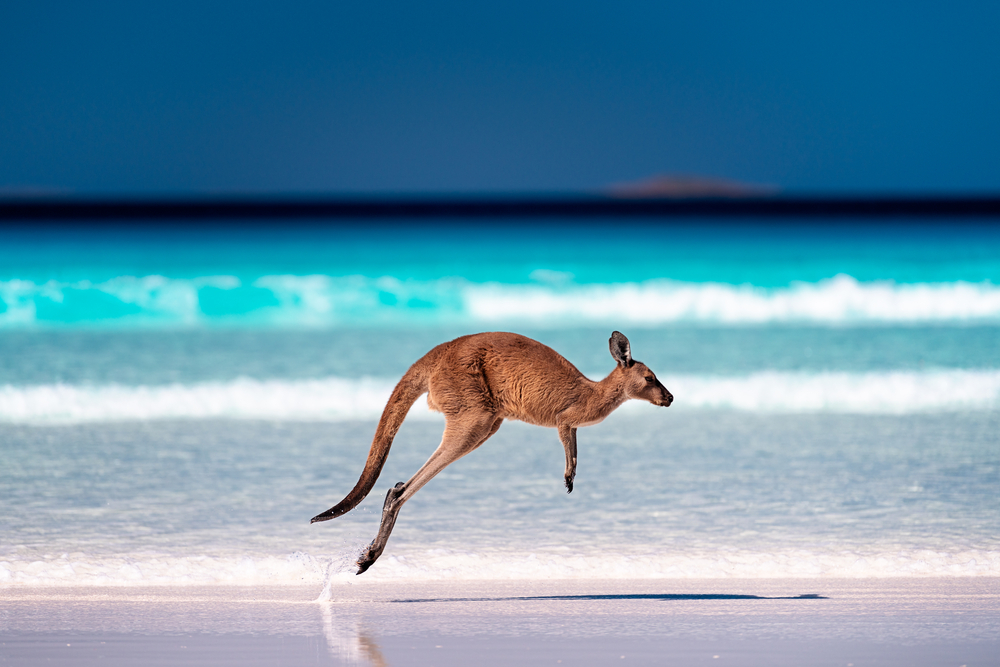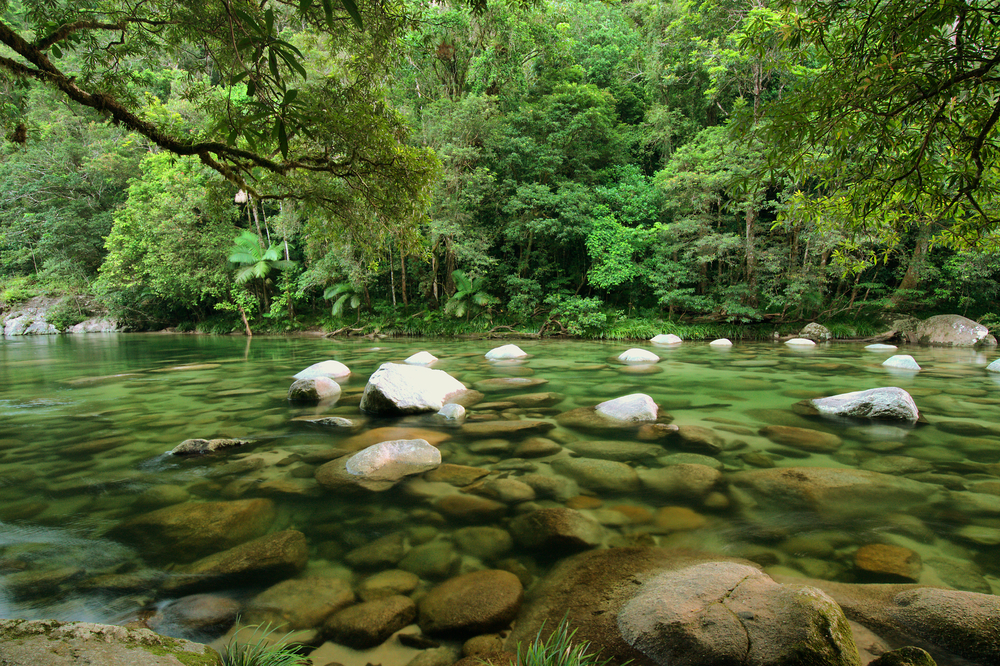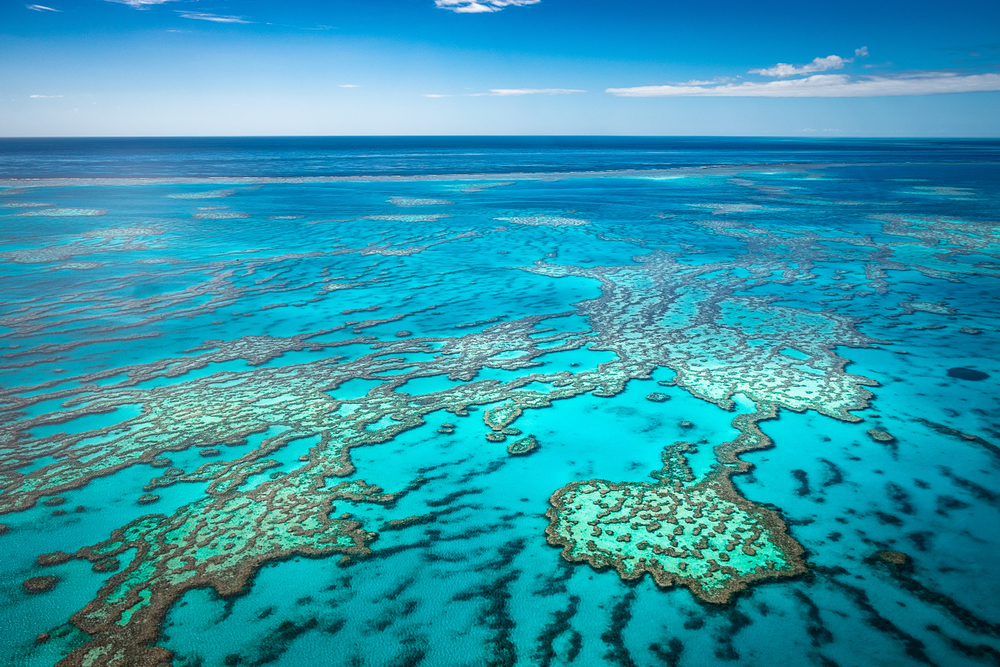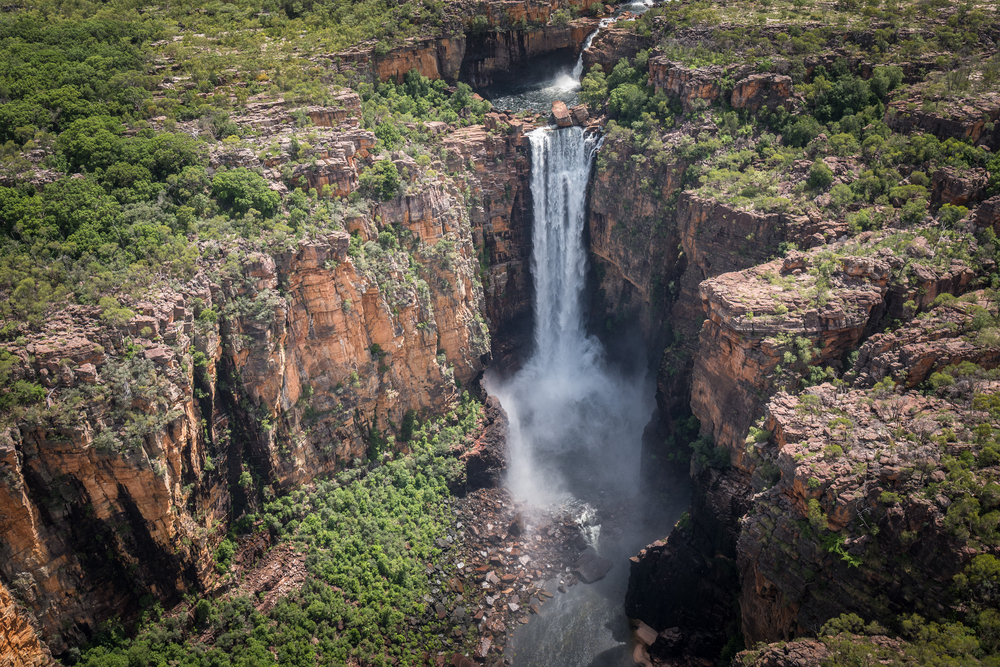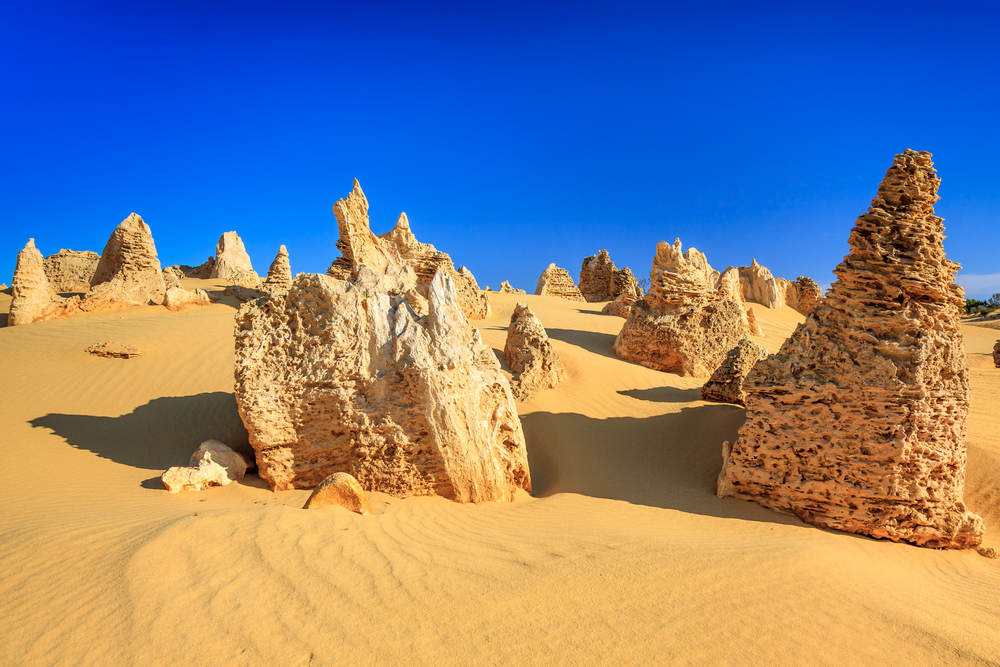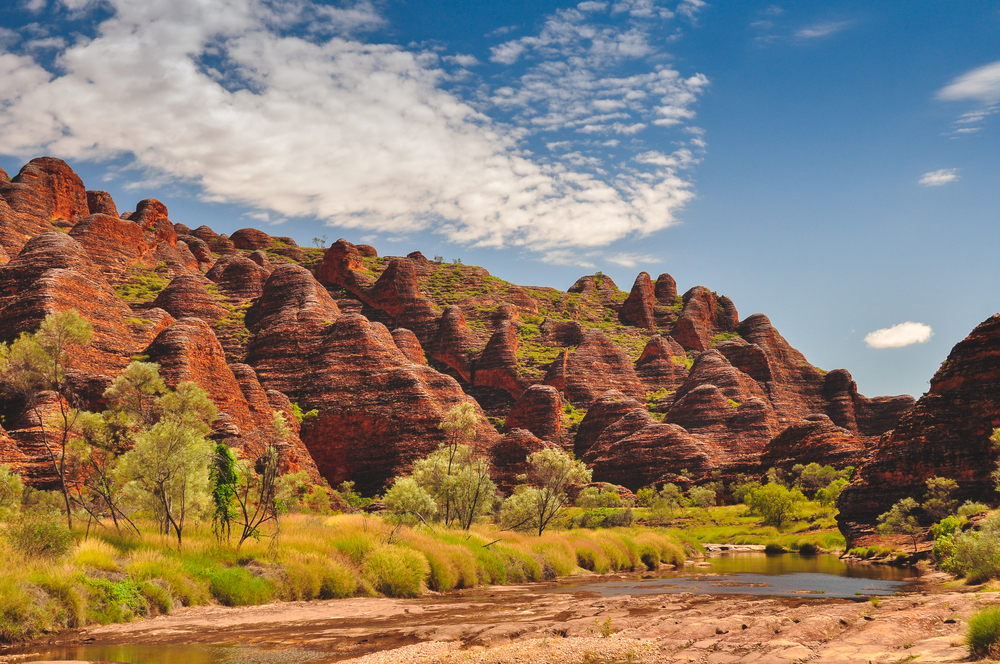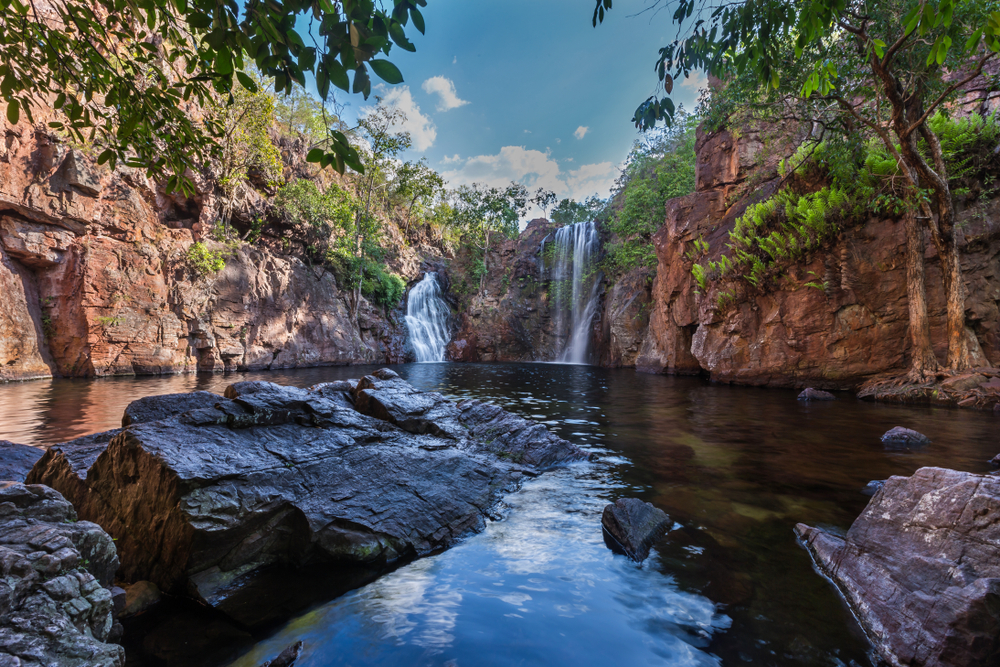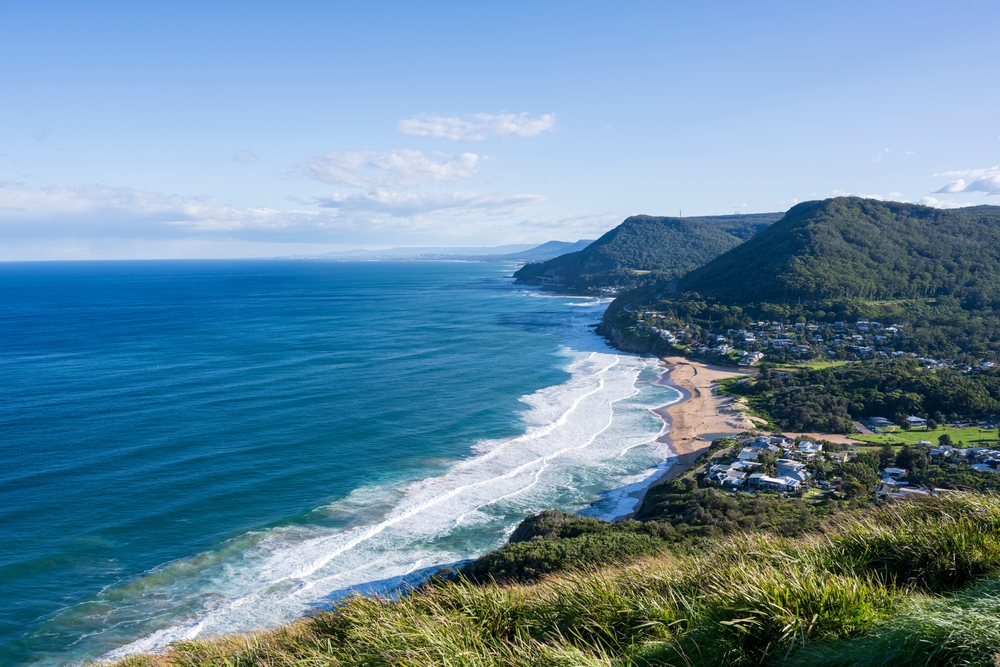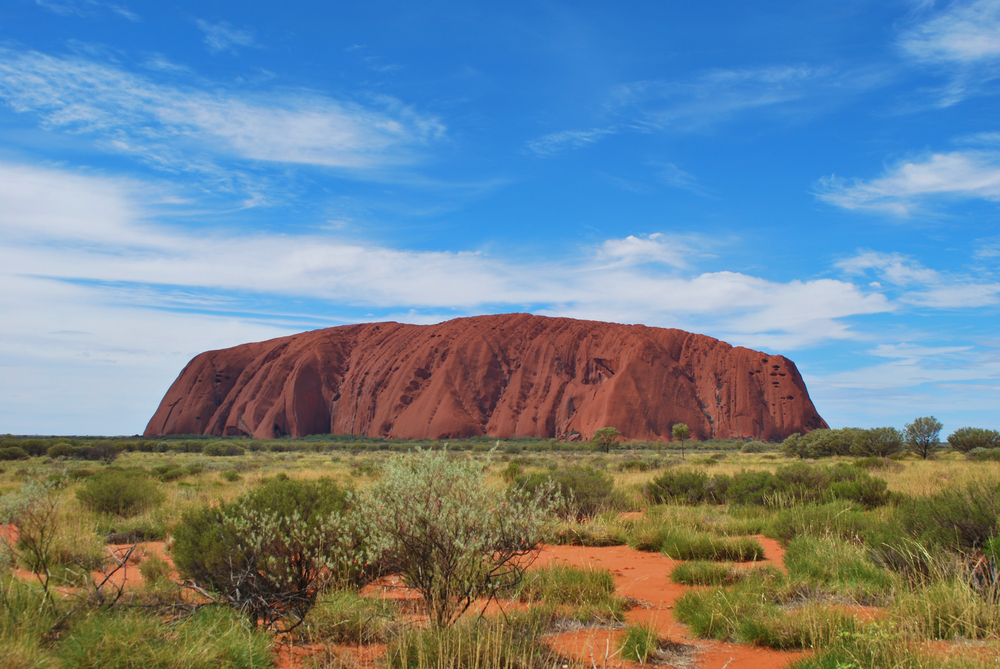Cape Le Grand Overview
Cape Le Grand National Park, known for its pristine beaches and rugged coastal beauty, is located in Western Australia, approximately 31 miles (50 km) east of Esperance.
Spanning 121 square miles (314 square km), the park is celebrated for its stunning granite peaks, white sandy beaches, and clear turquoise waters. The landscape is dominated by rocky headlands, rolling heathlands, and expansive coastal plains, with notable geological features such as Frenchman Peak and Mount Le Grand rising dramatically above the terrain.
The coastline is dotted with some of the most picturesque beaches in Australia, including Lucky Bay, known for its fine silica sand and frequent kangaroo visitors. Other prominent beaches, such as Hellfire Bay and Thistle Cove, offer breathtaking views and excellent swimming conditions, framed by granite outcrops and coastal vegetation.
The park is home to a diverse range of flora and fauna, thriving in its coastal and inland environments. Wildflower displays burst into color during spring, with banksias, grevilleas, and kangaroo paws brightening the landscape. The heathlands and coastal dunes provide vital habitat for native species, including the western grey kangaroo, which is commonly seen lazing on the beach or grazing in the park’s open areas.
Other mammals such as the honey possum and quokka also inhabit the park, though they are more elusive. Birdwatchers will find a variety of species, including the vibrant western rosella, the striking white-bellied sea eagle, and the elusive malleefowl.
The sheltered bays and offshore waters attract dolphins and sea lions, while southern right whales migrate along the coast between June and October, providing seasonal wildlife viewing opportunities.
Cape Le Grand National Park is widely regarded for its stunning natural attractions, drawing visitors to its crystal-clear waters and dramatic rock formations. Lucky Bay, famous for its powdery white sand and friendly kangaroos, is a highlight, offering a unique and photogenic experience. Hellfire Bay, with its turquoise waters and smooth granite rocks, is another favorite among visitors looking for a peaceful retreat.
The climb up Frenchman Peak rewards hikers with panoramic views of the surrounding park and coastline, offering a unique perspective on the region’s striking landscapes. Thistle Cove features remarkable rock formations, including the well-known Whistling Rock, where wind creates an eerie, whistling sound as it moves through crevices in the stone.
Visitors to the park can engage in a range of activities, from swimming and snorkeling in the pristine waters to hiking the rugged trails that traverse the coastal and inland landscapes. The Le Grand Coastal Trail, a 9-mile (15-km) trek, offers breathtaking views and a chance to explore the diverse scenery, from beachside cliffs to dense bushland.
Camping is a popular way to experience the park, with facilities available at Lucky Bay and Cape Le Grand Beach, allowing visitors to wake up to the sound of waves crashing against the shore. Fishing, kayaking, and beachcombing are also favored pastimes, providing opportunities to connect with the natural beauty of the region.
Conservation efforts in Cape Le Grand National Park focus on preserving its fragile coastal and heathland ecosystems. The Western Australian Parks and Wildlife Service manages visitor impact while protecting native species from threats such as invasive predators and habitat degradation.
Successful conservation initiatives have helped maintain the health of the park’s wildlife and landscapes, ensuring future generations can continue to enjoy its unique beauty. The balance between tourism and conservation remains a priority, with ongoing efforts to protect the delicate dune systems, prevent pollution, and maintain sustainable visitor practices.








































































